Interested in learning about dwm.exe? You’re not alone! Many individuals are currently seeking information on this topic. Lately, the question has been frequently raised across various online platforms due to concerns regarding its high CPU utilization. As a result, we’ve compiled this article to provide you with essential insights on how to address errors related to dwm.exe.
Contents
- 1 What is dwm.exe?
- 2 Fix Desktop Window Manager High CPU Usage
- 2.1 Solution 1: Restarting explorer.exe
- 2.2 Solution 2: Disabling problematic services
- 2.3 Solution 3: Deleting the mdi264.dll
- 2.4 Solution 4: Installing older graphics card drivers
- 2.5 Solution 5: Running the SFC scan
- 2.6 Solution 6: Run DISM
- 2.7 Solution 7: Using the performance troubleshooter
- 2.8 Solution 8: Changing the Windows theme
- 2.9 Solution 9: Removing third-party antivirus programs
- 2.10 Solution 10: Checking USB devices
- 3 FAQs
What is dwm.exe?
You must be familiar with all the fascinating effects you can experiment with on your computer, such as transparent windows, live taskbar management, flip 3D, and more. Well, behind all these features lies dwm.exe, also known as the Desktop Window Manager.
In general, dwm.exe is a legitimate Windows file and should be running on your computer without any issues.
Why does my computer show it as malware?
The Desktop Window Manager is not a virus file.
There should be no doubt about the legitimacy of dwm.exe on your computer. However, it’s evident that some antivirus software might mistakenly flag it as a potential threat. The reason behind this is that malware creators often give their malicious programs the same file name to evade detection.
As a result, over time, antivirus software might start considering dwm.exe as a virus, causing confusion and false alarms.
Should I turn off the Desktop Window Manager?
You can’t. Disabling dwm.exe is only possible in Windows 7 or Vista versions. However, in other versions, it is closely integrated with various program components and plays a vital role in graphical features. Moreover, the newer versions of dwm.exe are highly efficient in managing system resources, making it unnecessary to turn them off.
What to do when dwm.exe is eating up a lot of RAM and CPU?
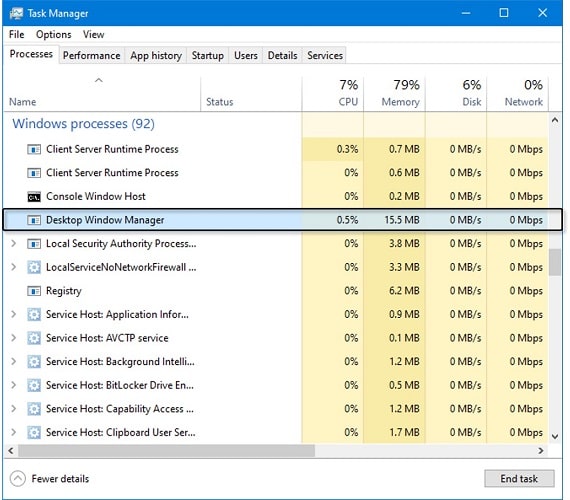
As previously mentioned, the newer version of dwm.exe in Windows 10 is significantly improved in resource management compared to its older counterparts. However, there are instances where it might consume excessive RAM and CPU or even experience crashes.
As a result, it’s essential to know how to handle such situations when they arise. Therefore, we have compiled several methods for you to try out if you ever find yourself in such a predicament.
Fix Desktop Window Manager High CPU Usage
Solution 1: Restarting explorer.exe
Restarting your computer is often the initial fix you may have attempted, and it’s a common go-to solution for various errors. However, in this case, you weren’t entirely mistaken. Instead of a full computer restart, consider restarting explorer.exe as a viable alternative.
- Go to the Windows search bar. Type in task manager and hit enter.
- Open the first app and probably the only one among the results. (Alternatively, you can use the option Ctrl + Shift + Esc as most people do.)
- Find explorer.exe on the task manager and select it.
- Click on the End task option at the right bottom part of the screen.
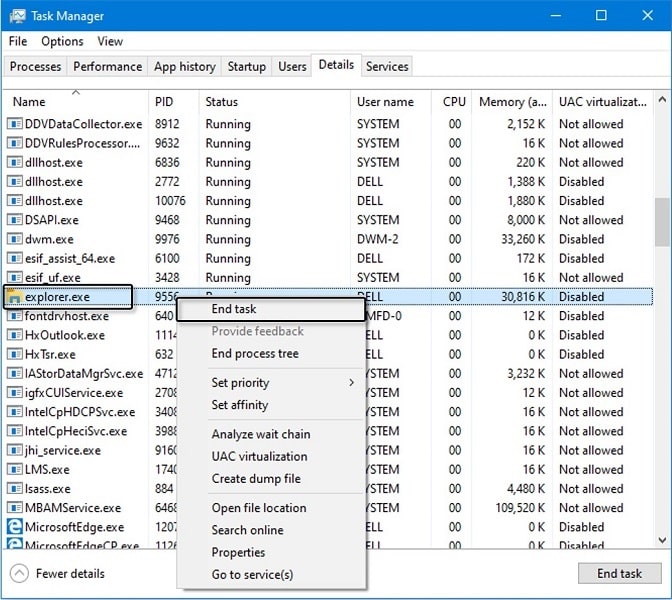
- Click the File option on the top left corner of the screen.
- Choose the Run new task option.

- Type in explorer in the space provided and then choose OK or hit Enter.
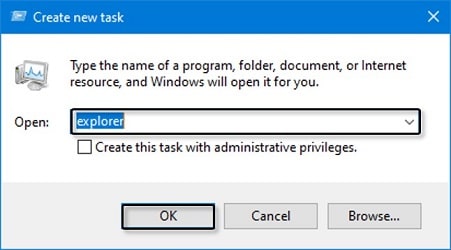
Do note that this is just getting out of the error ways for a while. It will eventually come around again.
Solution 2: Disabling problematic services
Some programs within your system can cause issues with the proper functioning of dwm.exe in Windows OS. In such cases, your only option is to locate and disable those troublesome programs to ensure smooth performance.
- Use the Windows search bar to look for the Run app.
- Open the app from the search results. (You can also open the run dialogue box by pressing the Windows key + R key on your keyboard.)
- Type in services.msc in the space provided and choose OK or hit Enter.
- In the window that opens find the Skype Updater, Google Update (update), and Google Update Service (gupdate) services.
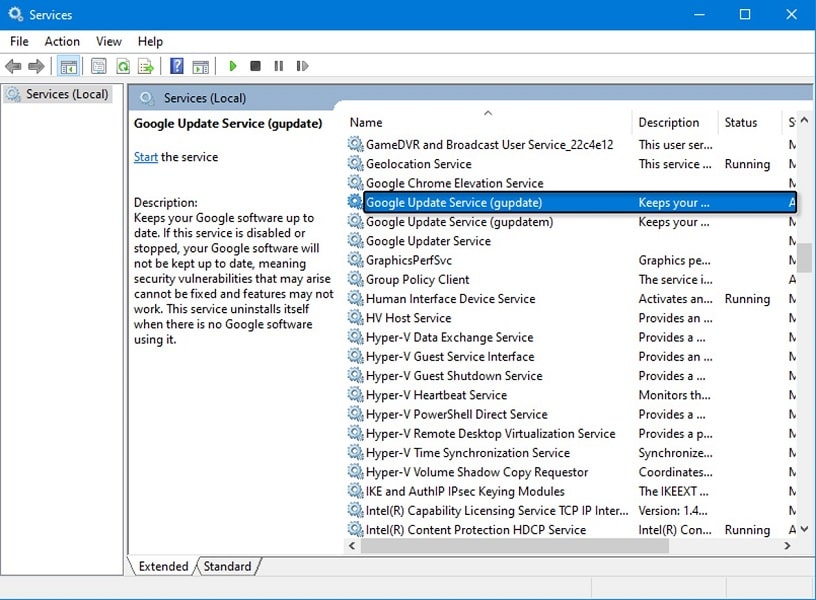
- To disable the service, all you need to do is to double-click it.
- Change the Startup type to Disabled on the properties window that appears.
- Choose Apply and then OK to save the changes made.
- Disable all the services mentioned earlier and you are good to go.
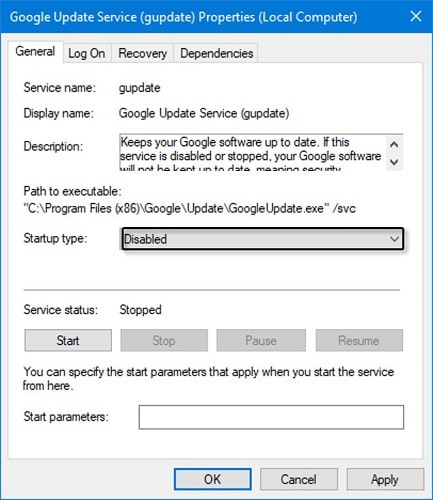
Solution 3: Deleting the mdi264.dll
Many anti-virus programs flag mdi264.dll as a potential malware file, leading to dwm.exe’s high CPU usage. To address this issue, we’ll guide you through removing the file using the command prompt.
- Go right ahead and click on the Windows icon on your screen.
- Press and hold the Shift button on your keyboard and hit choose Restart from Power menu.
- During the restart, go for the Troubleshoot option as soon as it appears.
- Choose the Advanced options option followed by the Command prompt option.
- This will cause the Command prompt window to open. When that happens, type in the command as follows and hit Enter: cd C:\Users\Your Name Here\AppData\Local\Temp
- After you are done with that command, do the same with this one as well: del mdi264.dll
- After you are done deleting the file, close the command prompt.
- All that’s left to do is to Restart your computer and you are done.
Solution 4: Installing older graphics card drivers
We all appreciate Nvidia’s graphics drivers as they consistently enhance our gaming experience with each new release. However, it has been reported that certain recent versions of Nvidia drivers may lead to dwm.exe crashes. In such situations, the only option left is to revert back to the previous versions of the drivers.
- Press the Windows key and X key on your keyboard simultaneously to open the Power User Menu.
- From the list that appears, choose the Device Manager option.
- Look for your graphics card driver in the list that appears.
- Double-click on it once you find it.
- A window will pop up. Click on the Driver tab on its top side.
- Choose the Roll Back Driver option.
- Click on OK and wait till it ends.
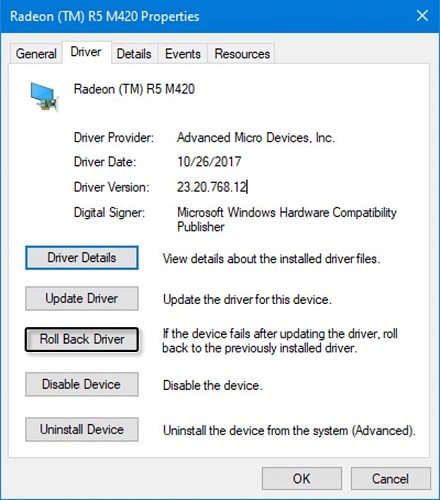
Solution 5: Running the SFC scan
The System File Checker (SFC) is an incredibly valuable tool within the realm of Windows. With this tool at your disposal, you can effortlessly scan and repair any corrupted files that may exist on your computer. As a result, SFC becomes the go-to solution for any troubleshooting activities you may encounter.
- Place the search bar on the Windows Search bar.
- Type in cmd or command prompt.
- When the search result appears, right-click on the Command Prompt app. Then choose the Run as Administrator option.
- Type in the command given below and then hit Enter: sfc/scannow
- It will probably take a while for the entire process to finish. Just wait it out.
- Once you hit the finish line, Restart your computer.
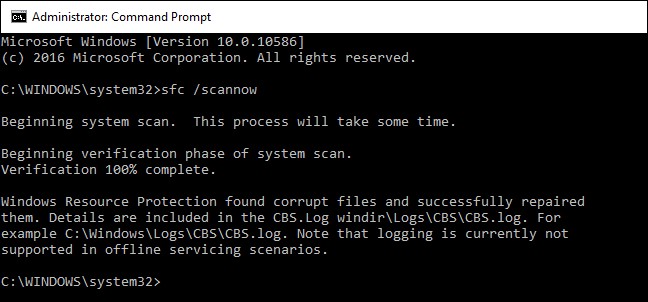
Solution 6: Run DISM
Next, let’s proceed with another troubleshooting method known as DISM, which stands for Deployment Image Servicing and Management. This powerful tool is capable of deploying and repairing corrupted system image files, which can effectively address issues like high CPU usage related to the desktop Window manager.
- Go to the Windows Search bar. Type in cmd or Command Prompt.
- When the app appears among the results, right-click on the app from the results and choose Run as administrator option.
- In the command prompt, type in the following command and press Enter: DISM /Online /Cleanup-Image /ScanHealth
- After you are done with that command, do the same with the following command: DISM /Online /Cleanup-Image /RestoreHealth
- The task might take about 10 minutes to end. Wait it out just like before.
- Restart your computer after it’s over.
Solution 7: Using the performance troubleshooter
This will be the final troubleshooter we’ll explore – a reliable one provided by Windows itself.
- Using the Windows search bar look for the command prompt and then run it as an administrator.
- Type the following command and then hit Enter: msdt.exe /id PowerDiagnostic
- Wait patiently for the process to complete just as you did in the above two methods.
- Yeah, Restart your computer as you have done before.
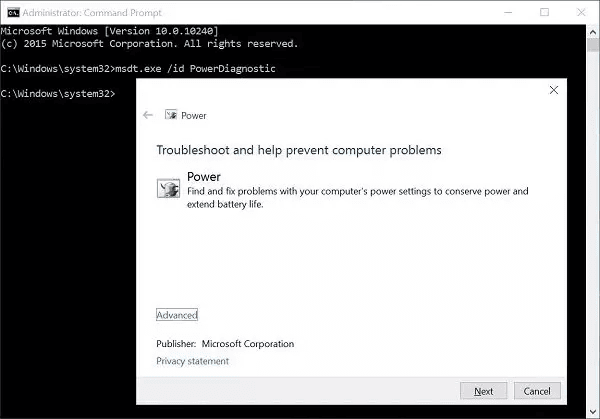
Solution 8: Changing the Windows theme
While it might seem unconventional, changing the theme temporarily or disabling the screensaver can sometimes be effective. The reason is that dwm.exe is responsible for handling various tasks like theme customization, wallpaper settings, taskbar management, screensaver controls, and more. Adjusting these settings, it may help alleviate issues related to dwm.exe and its functions.
- Right-click on a free area of the desktop.
- Choose Personalize from a bunch of options.
- Go to Themes section and choose Windows (light).
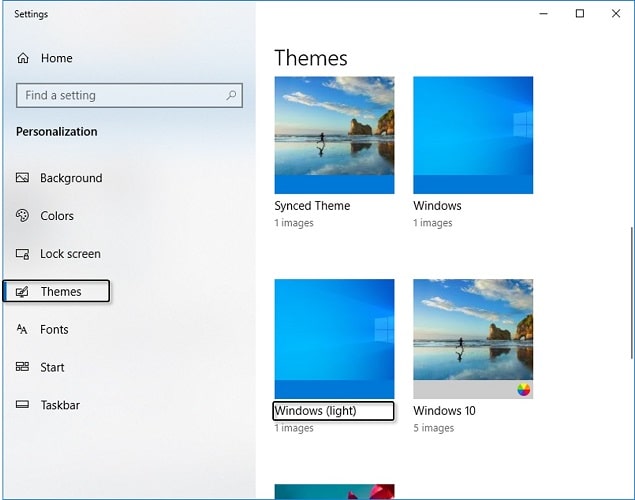
- Now select Lock Screen tab and scroll down a bit.
- Find Screen Saver Settings and select None.
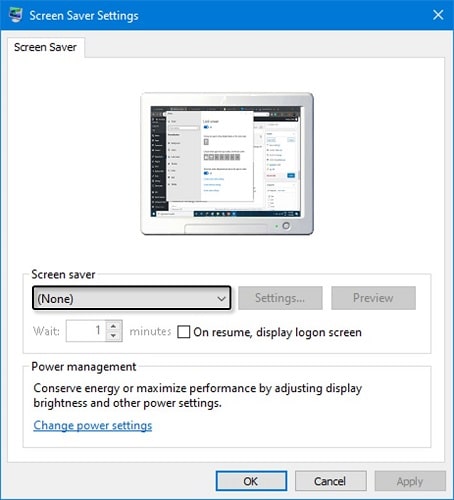
Bonus tips
Solution 9: Removing third-party antivirus programs
Keeping viruses on your computer is certainly not a wise decision. These harmful elements often find their way into your system when you access sites that should be avoided. It is widely known that such malicious software can lead to various issues, including problems like dwm.exe consuming high memory resources.
Solution 10: Checking USB devices
Numerous users have reported that wired devices like Xbox controllers can trigger dwm.exe crashes. Hence, it’s advisable to inspect any USB devices you have connected before attempting any troubleshooting method. If a problematic USB device is indeed the cause, identifying it early on will save you time and spare you from unnecessary hassle.
FAQs
Do I need dwm.exe on my computer?
The Desktop Window Manager (dwm.exe) is a Windows process that is responsible for controlling the visuals of the Windows user interface, such as themes, window effects, and taskbar icons. There is no need to worry about this process, as it is a normal part of Windows and is not causing any issues.
Why does DWM take so much memory?
DWM takes up so much memory because it is responsible for rendering the graphics of the Windows interface. It is responsible for creating and managing windows, drawing the title bar, resizing windows, and other graphical elements. It also caches graphical elements, which increases the amount of memory it uses.
Why is dwm.exe using all my GPU?
Dwm.exe is a Windows process that runs in the background and is responsible for rendering the UI elements of Windows. It is likely using all your GPU because it’s trying to keep up with the graphical demand of the programs you’re running. The more programs you’re running, the more GPU power dwm.exe will require.
Where is the dwm.exe file?
The dwm.exe file is located in the C:\Windows\System32 directory on a Windows computer. It is a Windows system process that handles the display of Windows and other graphical elements on the computer.
How do I reduce Desktop Window Manager memory usage?
Desktop Window Manager memory usage can be reduced by closing unnecessary programs and windows, disabling animation effects, and reducing the number of background processes running on your computer. You can also change your display settings to use fewer resources. Additionally, updating your graphics drivers can help to reduce memory usage.
